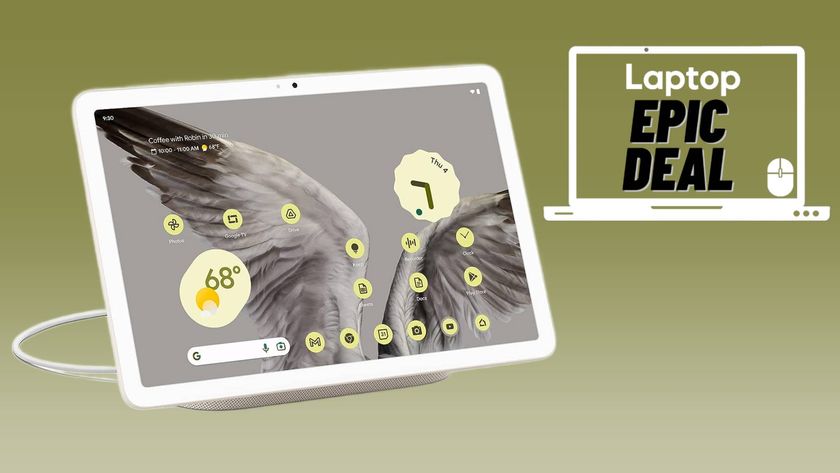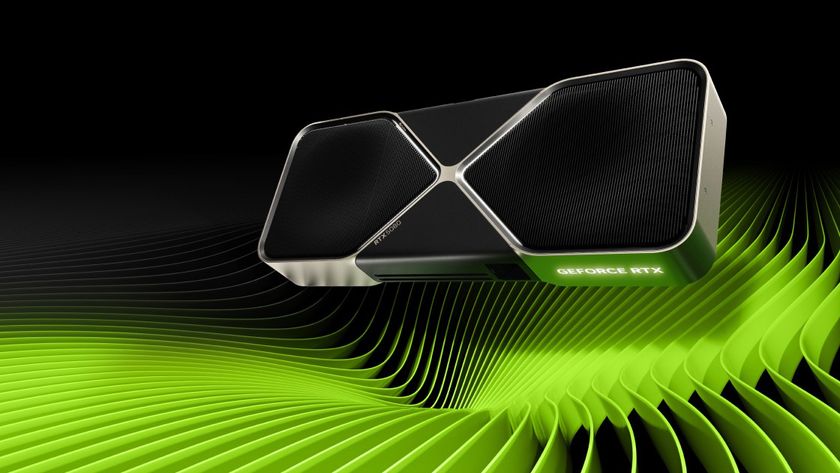Laptop Mag Verdict
This bestselling photo editor returns with new tools and a greater emphasis on sharing photos online.
Pros
- +
Mix of auto, advanced, and guided editing tools
- +
Live search helps find tagged photos
- +
Easy to upload photos to Web
- +
Innovative and fun merging features
Cons
- -
Steep hardware and memory requirements
- -
Not Mac compatible
Why you can trust Laptop Mag
There's a reason Adobe Photoshop Elements is a household name in photo editing; we've always praised its rich set of editing tools. But when it comes to sharing photos with friends and family, it always fell short of Web-based competitors like Picnik. But Adobe is catching up in that department; while the latest version continues to serve up new editing and organizational tricks, it also allows users to upload albums directly to the Web, thanks to its integration with the newly rebranded Photoshop.com.
Hardware Requirements
When you buy or download software it's easy to breeze over the system requirements, apart from making sure it's compatible with your operating system. But this version of Elements has fairly steep requirements: it only works with Windows (for Mac users, the most recent version is Photoshop Elements 6). It also requires a 2.0-GHz processor, as well as a full gigabyte of RAM and a hefty 1.5GB of disk space. People with older, creakier systems might want to opt for Google Picasa, a lighter, if less robust editor.
User Interface
When you first open Photoshop Elements 7 you'll see a task-oriented screen with options for organizing, editing, creating, and sharing. Once you enter, Elements has the same look and feel as other Adobe products, including Photoshop.com: a dark gray background with lots of small, colorful icons.
Once you enter any of these areas, you'll see a static pane on the right side of the screen, which has tabs for Organize, Fix, Create, and Share, so that you can move between these tasks with ease. Otherwise, the rest of the interface--the hierarchical tabs, the icons lining the left side of the screen--change depending on what you're doing.
We like that despite how many features the program boasts, there's still plenty of space for editing and viewing photos. But as with other Adobe products, the small icons' purposes aren't always obvious until you roll over them with your cursor.
Organizing Photos
Unlike Google Picasa, which prompts first-time users to scan for photos on their hard drive, Photoshop Elements' users have to import photos themselves. However, when you click File > Get Photos you can opt to have the program search selected drives or folders. We do like that when you import photos you can check a box authorizing Photoshop Elements to remove red eye automatically. Like Corel Paint Shop Pro X2 Ultimate, Elements 7 supports RAW photos.
Once imported, photos appear as a grid of thumbnails, with a row of five blank stars underneath (to rate a photo, just roll the cursor over a star and drag it as far right or left as you want, depending on how much you like the photo). In the upper right corner of this grid is a master row of stars accompanied by a drop-down menu, allowing users to sort photos by star rating.
By default, Elements 7 shows only the most recently imported photos, but you can click Show All to view your entire catalog. Above this grid, and to the right of the static task-oriented tabs, described above, is a sliding scale allowing users to adjust the size of the thumbnails. Users can also sort by date, using a drop-down menu. Also here are two icons that let users rotate photos.
Smart Tagging
Photoshop Elements already supports photo tagging, but now users can search for photos using a live search bar in the upper left corner of the window. As soon as you start typing, Elements begins narrowing the results. From the right-hand organizational pane, users can manually create tags, even adding icons to them, and place them under one of these umbrellas: People, Places, Events, and Other. However, we found it much easier just to write captions for photos. Users can even add audio captions, although these, of course, will not translate to searchable keywords.
The new live search system is smart. When we typed in "flower," all of the photos which had flower in the caption showed up. When we expanded our query to "flower Nikon," it showed only the photos we took with our Nikon point-and-shoot.
Simple Editing
When you find a picture in the viewer that you want to edit, you can click the Fix tab in the right-hand pane to begin editing. By default, the options listed are automatic: Auto Sharpen, Auto Contrast, and Auto Red Eye Fix, for example. But below that are links for Quick Fix, Full Edit, and Guided Edit.
Photoshop Elements edits nondestructively, always saving a copy of the original photo. It's important to know that at any time you can click the Organizer button in the upper right-hand corner to return to your photo catalog; you can pick up where you left off when you return to the editing screen.
True to its name, Guided Edit is for novices. The menu in the right-hand pane titled, "What would you like to do?" has a list of task-oriented options, including Enhance Colors and Correct Skin Tone. When you click on one of these options, you'll get on-screen explanations and can preview your changes. If you choose Enhance Colors, for example, the sliding scales for hue, saturation, and lightness will show one-sentence explanations for these terms.
You might think that Quick Fix means the mother of all Auto edits: one click and you're done. In fact, it's manual editing for people who are strapped for time. Using sliding gradients, users can adjust the shadows, highlights, midtone contrast, saturation, hue, temperature, tint, and sharpening. However, Quick Fix does contain a Touch Up menu, whose one-click fixes include red-eye correction, making blue skies bluer, converting to black-and-white, and, new for this version, teeth whitening.
Full Editing
Elements 7 features several new editing tools, and given how robust they are, the full editing menu remains easy to navigate. In the right-hand pane you'll find drop-down menus for effects and layering. Along the top are high-level editing tabs, as well as a 12 x 2 pane on the left side with the most essential functions, such as cropping and erasing.
Adobe Smart Brush allows users to selectively apply changes to a photo, making skies a deeper blue, for instance. When you click on the Smart Brush tool, located in the 12 x 2 pane, you'll see a drop-down menu with nine categories and 67 uses, which include brightening photos and enhancing sunsets and greenery.
This feature works like a charm: In order to make the sky in our overcast photo a richer blue, we just clicked on the sky and dragged the cursor to the edge of the photo to let the program know that we wanted to color the whole sky, and Elements automatically applied that change to the sky but not the skyline that bordered it. (You can check the Inverse box next to it to lend the skyline a deep blue tone.)
Also new is Photomerge Scene Cleaner. Previously, Elements users could use Photomerge Group Shot to blend different versions of a group shot. Now they can blend different photos of a scene to erase unwanted elements in the background, such as passersby. We used two photos of a street scene, one of which had a passing bicyclist in the foreground. Just open all the photos you want to blend and use the cursor (in this case, a paintbrush) to mark the objects you want remaining in the final picture. Oddly, this took some getting used to: it seems more natural to cut out the unwanted elements instead.
The new Surface Blur filter in the Effects pane allows you to soften skin and other surfaces. We tried it on photos of flower petals and concrete, and found that, overall, the effect was subtle (you can adjust the threshold).
If you love special effects you've come to the right place: this version has 13 categories with 97 individual effects.
Sharing Photos
Under the Share tab, users can create albums at Photoshop.com, e-mail photos as attachments, print them, order prints, and burn a CD or DVD. The Create tab has options for users to make photo books, calendars, collages, and slide shows, as well as order prints.
The most compelling option is Photoshop.com, a site where users can store, lightly edit, and share photos. Formerly called Photoshop Express, the free Basic version includes 2GB of storage space, and even those who don't own Photoshop Elements can create an account. The Plus version ($139 with purchase, $49.99, purchased separately) includes 20GB of storage, movie themes, backup, tutorials, additional special effects, and season craft ideas and templates.
Verdict
Because it accommodates different ability levels, Adobe Photoshop Elements 7 isn't specifically for advanced users or novices but rather, anyone who wants to do more with their photos. For $99.99 it offers an unbeatable feature set, but the free Google Picasa gives users a simpler interface to edit and organize photos, and then send them to the cloud. For people enthusiastic about photo editing, however, Elements 7 is the best you can get.
Adobe Photoshop Elements 7 Specs
| Company Website | http://www.adobe.com |
| Disk Space | 1.5GB |
| Platforms | Windows |
| Required Processor | 2.0 GHz or faster |
| Required RAM | 1GB RAM |
| Software Required OS: | Windows XP (SP2 or higher), Vista |
| Software Type | Multimedia Software |

Nvidia's Jensen Huang has some strong words for DeepSeek — and they're probably not what you think

You can get the Laptop Mag Editor's Choice Award-winning Google Pixel Tablet with Charging Speaker Dock for $120 off at Amazon

Some classic games may run worse on RTX 50-series gaming laptops — Here's why
